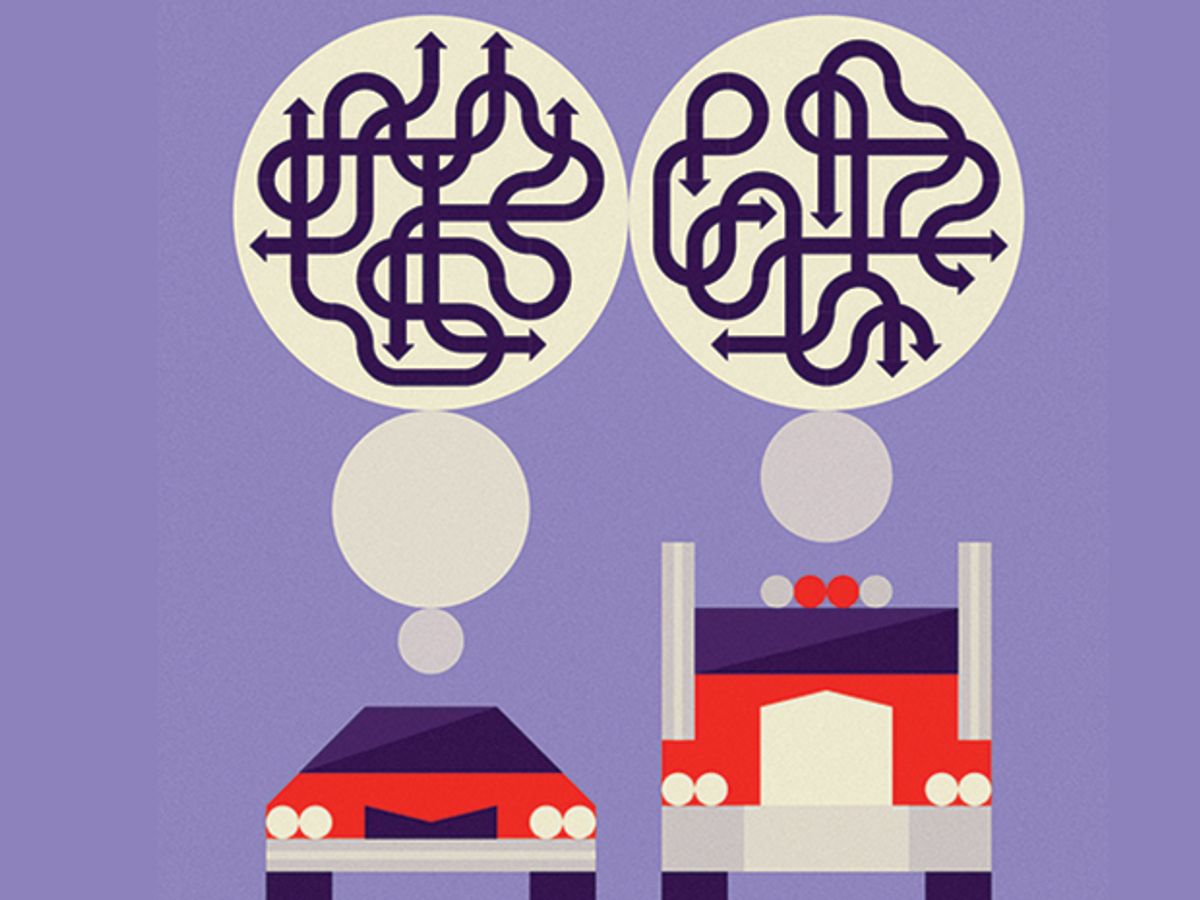
Former GM R&D chief Larry Burns has likened it to an arms race. But whether you think the advent of self-driving vehicles is going to destroy our economic systems or save our cities, the total automation of driving is certainly going to transform the way we live.
Ford, Google, Mercedes-Benz, Tesla, and Uber, among others, have all boldly declared that they will get fully autonomous cars and trucks on the road in the United States by 2021. At the end of last year the Uber-owned company Otto sent a Budweiser beer delivery from Fort Collins, Colo., to Colorado Springs by autonomous truck. Chinese Internet company Baidu, partnering with Foton Motor Group, introduced its sleek semi-autonomous Super Truck. Daimler tested a driverless truck platoon in Germany. The only place driverless cars don’t seem to be turning up anytime soon is India, where, according to Maruti Suzuki chairman R.C. Bhargava, autonomous cars will never be able to keep up with their make-it-up-as-you-go human counterparts.
In this year’s Top Tech special report, you’ll find a story by Evan Ackerman about nuTonomy, one of the up-and-coming companies jockeying for position in the race to build autonomous cars and fleets. The MIT spin-off has been experimenting with its software- and sensor-loaded Renault Zoes in Singapore since last year, and is also test-driving its nascent self-driving taxi fleet in the Boston area.
Singapore has to be proactive about self-driving cars, as Ackerman points out: The city-state’s 5.6 million people are packed into just over 700 square kilometers, making it the third most densely populated country in the world. Roads in Singapore take up nearly as much land as housing does, and as the population keeps growing, building more roads is simply not an option. Boston has similarly run out of road room.
As with any disruptive technology, there’s good news and bad news. Rice University’s Moshe Vardi, interviewed in advance of the Humans, Machines, and the Future of Work Conference he organized in Houston last month, explained the many positive impacts self-driving vehicles will have on us and our environment, “until you start to think about what it will do to the job market.” And that’s because, in the United States at any rate, the most common job in more than 50 percent of U.S. states is that of driver. Some 3.5 million people drive for a living. Not to mention the tens of millions of people who work in the infrastructure that supports cars, trucks, and drivers—motels, restaurants, gas stations, you name it—some 15 million by Vardi’s estimate.
Technological progress may not be inevitable, but technological change certainly seems to be. Questions about the impact of self-driving vehicles on the global workforce are already the subject of fierce and sometimes hand-wringing public debate, but mostly among sociologists and economists and Silicon Valley gurus. How interesting and useful it would be if the technologists and engineers who are assembling this new self-driving world helped frame these discussions about our driverless future.
This article appears in the January 2017 print issue as “Self-Driving Cars and Trucks Are on the Move.”
A correction to this article was made on 3 January 2017.

